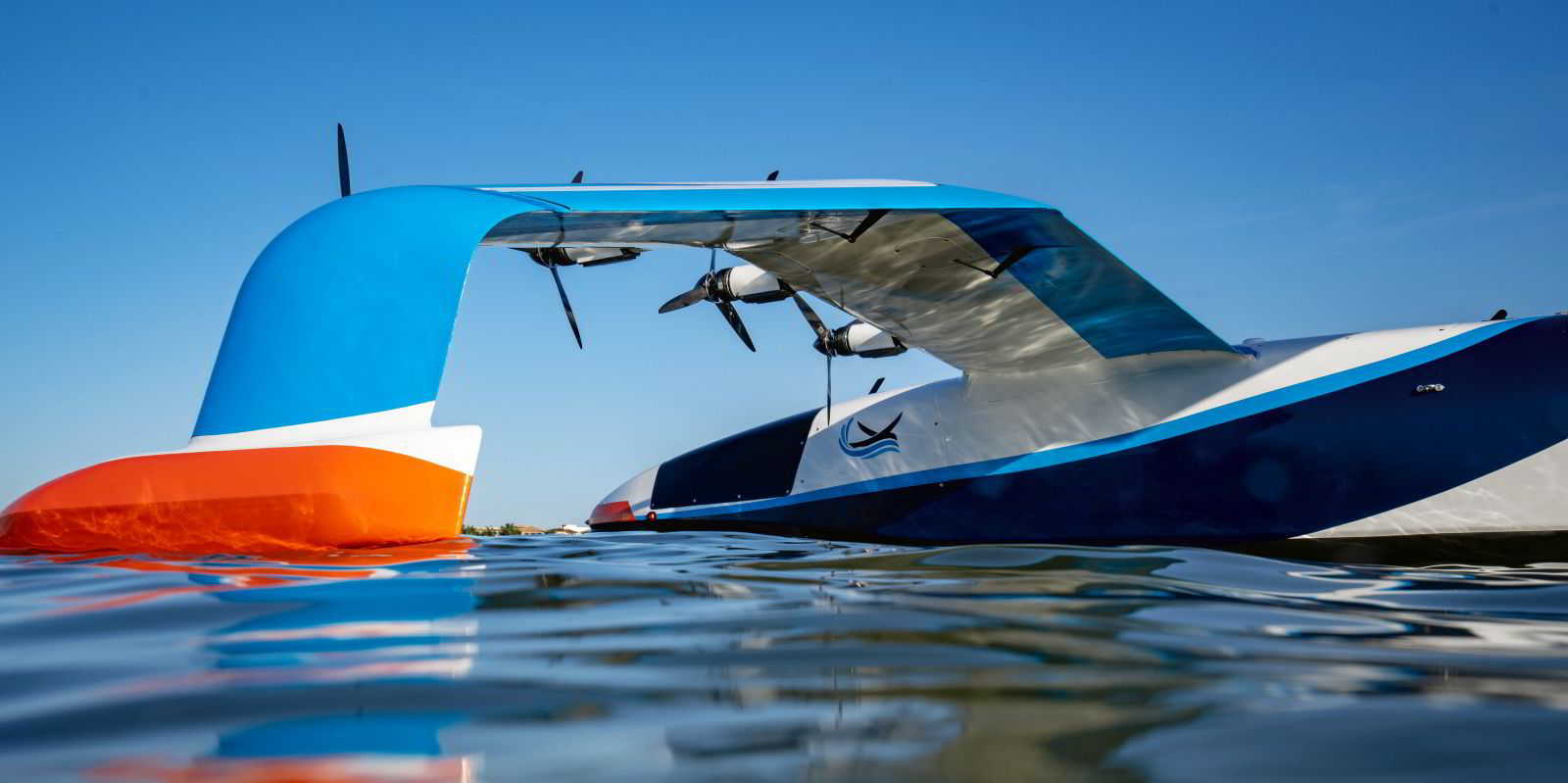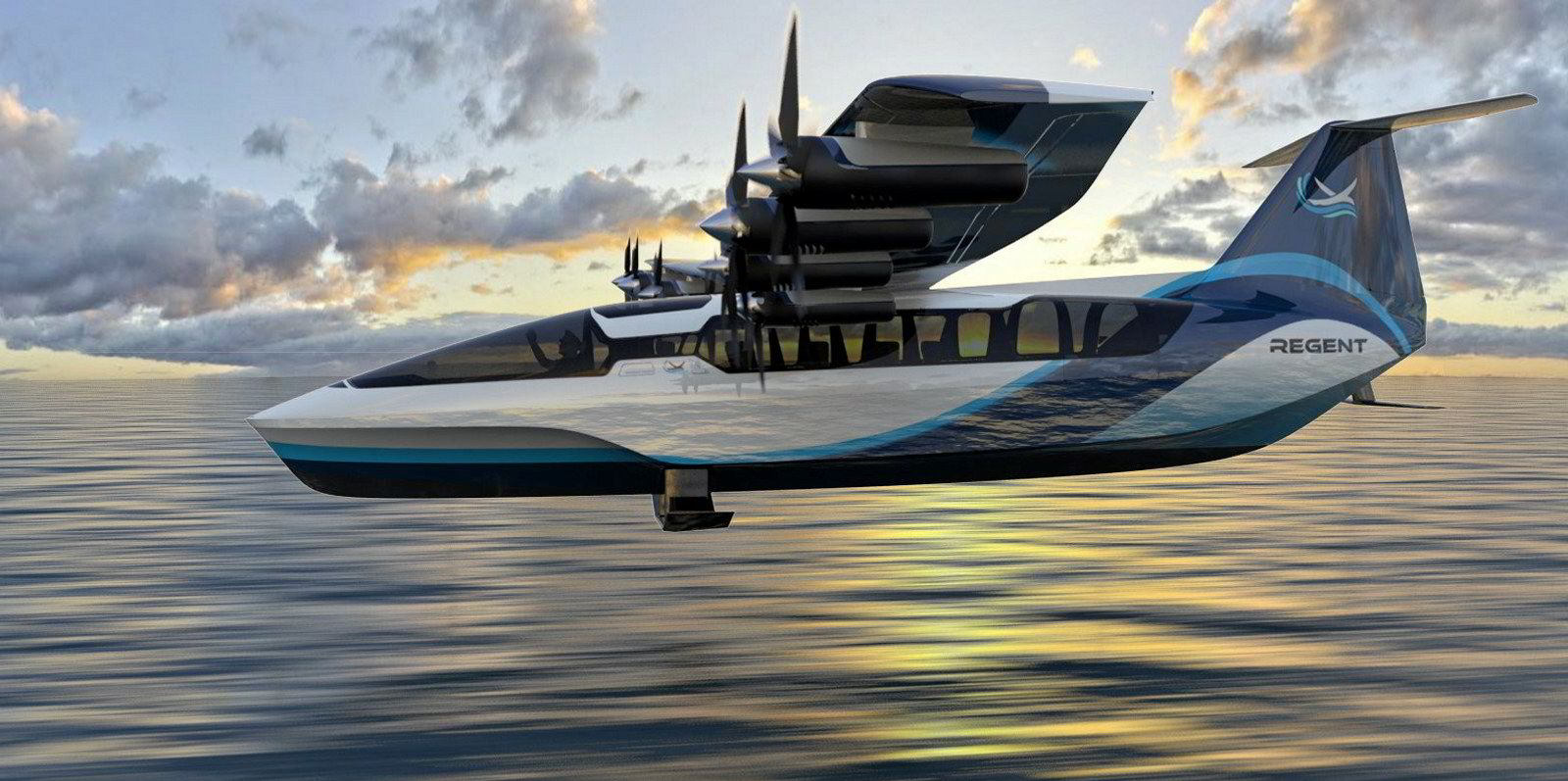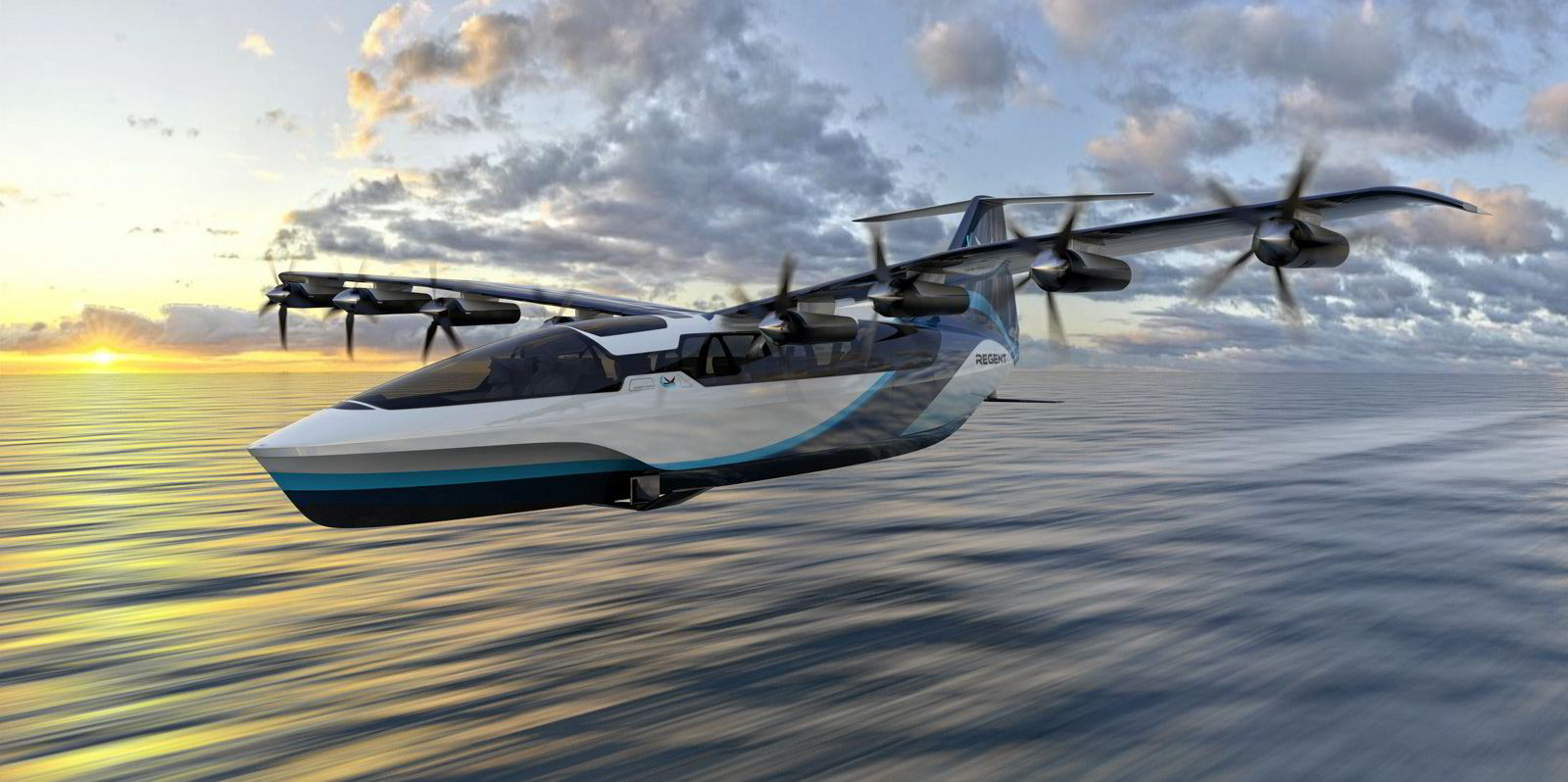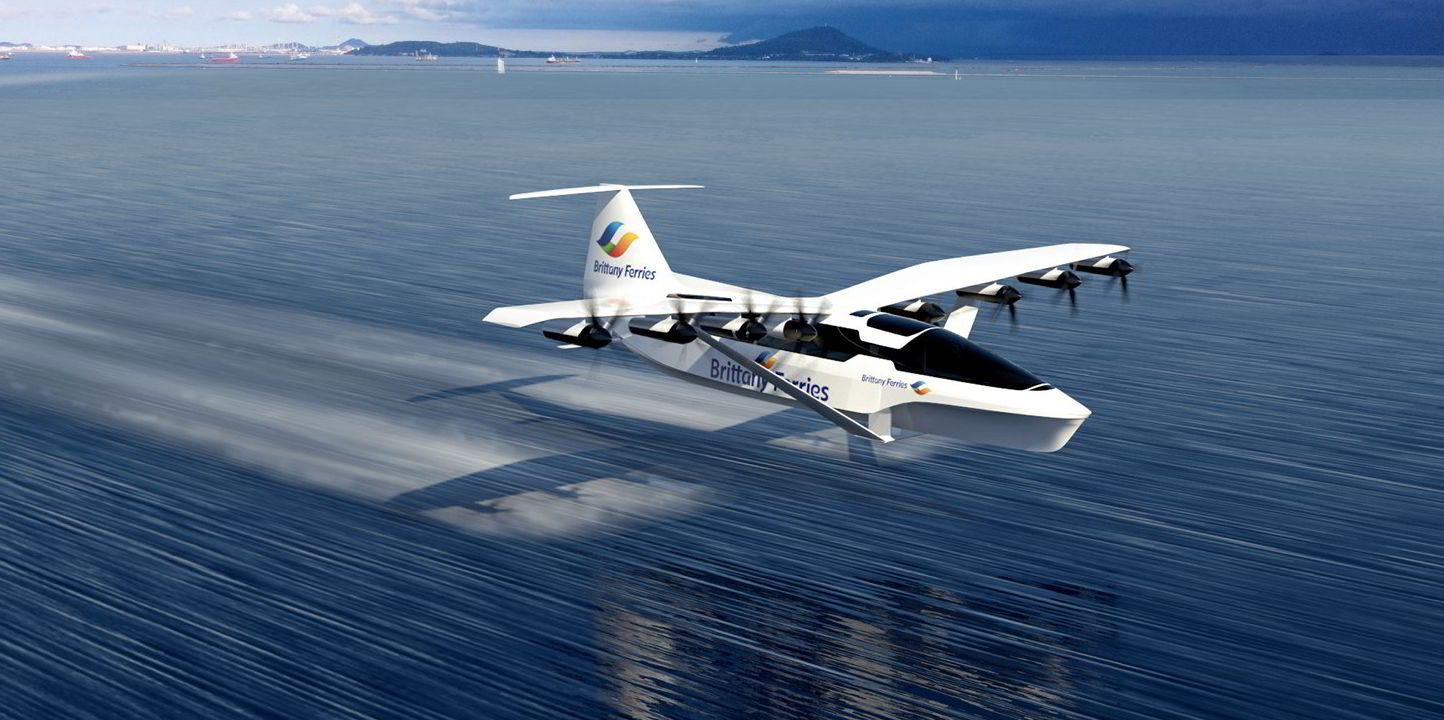The ferry sector has become a proving ground for the future of carbon-free electric shipping. We’ve recently seen the first fully electric, zero-emission fast ferry hit the water in Norway, and US ferry operators such as Casco Bay Lines and Washington State Ferries are turning to battery-powered ships to go all-electric.
But what makes batteries work on these vessels is an operational profile that keeps them near the shore. That’s because, although batteries present a tantalising option for eliminating emissions from shipping, their range is limited.
Elliott Bay Design Group chief electrical engineer Will Ayers, whose company is working with Casco Bay and Washington State Ferries, recently told TradeWinds that at the moment, ferries are unable to travel much more than 20 nautical miles (37 km) on battery power alone.
But what if there was a way to extend the range that a passenger vessel could travel? What if it took flight?
That is what is groundbreaking about the plans of Regent Craft to build its seagliders. The US company has just received approval-in-principal from French classification society Bureau Veritas for its Viceroy seaglider.
The so-called wing-in-ground effect vehicles (WIGs), as TradeWinds has reported, will sail from their dock, hydrofoil out of port and then take flight, although they will stay so close to the water that, for regulatory purposes, they remain in the maritime realm.
Powered only on battery, they’ll be able to travel 160 nautical miles (290 km).
Broadening the battery
That means Regent Craft’s WIGs may help decarbonise a broader range of ferry routes, not to mention over-water airline routes.
“On routes of these ranges, there’s 50 to 100 megatonnes of CO2 emitted globally per year,” said Regent Craft chief executive Billy Thalheimer.

“There’s no solution to replace them right now because we’re talking about aircraft, … old ships and fast ferries which can’t electrify.”
And he said Regent Craft is designing the craft to have a longer battery life, reducing the carbon impact of frequent replacement.
Bigger bird
Bureau Veritas’ preliminary approval covers the Viceroy, a 12-passenger seaglider, and Regent Craft is also planning a 100-passenger version called the Monarch.
Thalheimer also pointed to features of the seagliders that boost their economics: electric engines need less inspection and replacement of parts, and carbon fibre construction leads to less corrosion than metals used in ship construction, for example.

“We’re moving to all-electric systems with solid state everything. The only moving parts are the motor bearings, and so maintenance costs come down significantly,” Thalheimer said.
“This is basically aircraft speed and aircraft range with ferry prices on a per-head basis.”
And economics are key to the interest of customers, which have placed $7bn in provisional orders.
After all, environmental sustainability is something that Thalheimer sees as a must-have in the transportation space, and no one will pay just to be green.
“The ferry companies and airlines who are buying our seagliders today — why are they buying it? It’s because of the economics, because of this massive reduction in cost compared to existing systems,” he said.
Now, the proof will be in the pudding. Those customers, which include the likes of French ferry operator Brittany Ferries and Southern Airways Express, will be watching as seagliders advance through testing and regulatory approval.
More on sustainability and the business of the ocean
US classification society ABS sees carbon capture as a lynchpin of decarbonisation. “Scaling up carbon capture and the development of a carbon value chain introduces new opportunities for the maritime industry, both in terms of opening new markets through carbon trade and transportation as well as providing a net-zero fuelling solution for ships,” ABS chief executive Christopher Wiernicki wrote in TradeWinds. Click here to read the story.
Floating wind turbines may look different in the future. Norwegian technology developer World Wide Wind’s innovative design features two “contra-rotating” rotors on a slimline tower-spar structure that it believes will slash floating wind’s levellised cost of energy (LCOE) to €50/MWh ($49.85) from current levels over 2.5 times higher, as Recharge reports. Click here to read the story.
Shell Shipping & Maritime technology, innovation and digitalisation general manager Carl Henrickson and Shell LNG general manager and head of downstream Tahir Faruqui believe the LNG sector needs to work harder to cut methane emissions. They wrote in TradeWinds that LNG could have a role in enabling hydrogen as a fuel for shipping. Click here to read the story.





